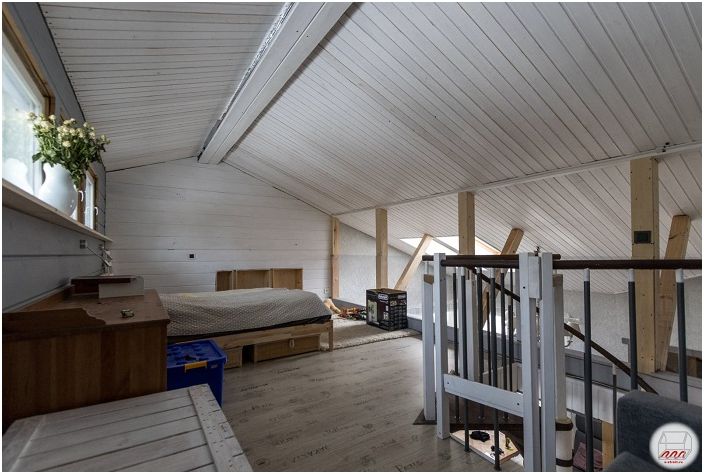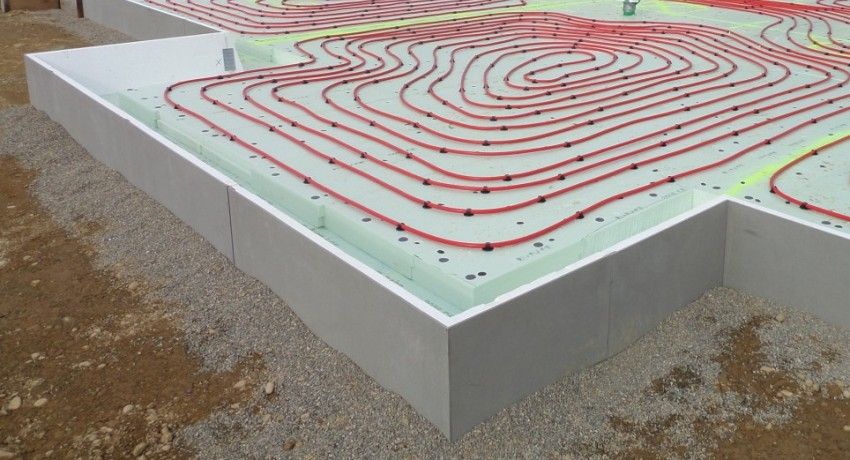The veneer board is widely used in furniture production. Previously, it was associated with kitchen door fronts, now a wide range of panels of this type gives much more options. They are used, among other things, as a decorative element on the walls inside the premises..
One of the biggest dilemmas when decorating or renovating a home is choosing the right materials. The question is what furniture to choose or what materials to decorate the walls with. Veneered boards can be used in almost any room – from the kitchen to the bedroom. Their appearance and high quality make them more and more often used in interiors..
What is veneer chipboard?
Veneered board (also known as veneered furniture board, veneered blockboard) is a chipboard (MDF or plywood can also be used in production). Natural veneer is applied on top of the base. Wood cladding is obtained by processing correctly prepared logs. The coating is applied under pressure. The finished product can be left in its original form or varnished. These building materials are most often used for facades of kitchen furniture, kitchen countertops supports and as wall panels..
Veneer is a cheaper alternative to natural wood. Its advantage is simple and fast processing. This material should be used in rooms where the humidity does not exceed 40-60% and the temperature does not exceed 40 ℃..
Veneering – process features
Veneering is a process of covering plywood with a layer of wood of a higher class. The cost of this board is much lower than that of solid wood, so you can create a kitchen that looks as good as a wooden kitchen with little investment. Veneer furniture facades will look good in any room.
Veneered panels in the interior
This material is mainly used in furniture production, for furnishing furniture and for decorative purposes. Thanks to the veneer, it is possible to give a noble look to plywood and furniture boards. Although the price of this product is not the lowest, the aesthetics compensate for this disadvantage.
- Veneered board for the kitchen
Facades and elements of kitchen furniture, countertops and shoulder pads, as well as shelves are made of veneer board. The material can also be used as decorative wall panels, for example, between kitchen worktops and wall cabinets. Their bright color will visually enlarge this space. If there is a lot of free space in the kitchen, you can insert a back-veneer panel for decorative purposes to slightly change the classic look of the kitchen and make it warmer. Shoulder legs covered with a board also look attractive. You can use slabs in an elegant American walnut color that matches the brick or gold shoulder elements.
When using veneer boards in the kitchen, be careful not to expose them to steam and water. They cannot be cleaned with ammonia, acetone or other alcohol-based products, as they can dissolve and destroy the varnish layer..
- Veneered floorboard
The advantages of floor panels stem from the technical properties of lumber:
- Natural materials are used as a basis.
- The panels are durable, reliable.
- The building material has excellent thermal insulation.
- The coating is environmentally friendly.
- Due to the anti-allergenic properties, the products are absolutely safe for health..
- Durability and strength ensures the longevity of the board.
- Due to its aesthetics, the material can be used for decoration of any premises..
Veneered floorboard is a great way to decorate your home, create a warm, cozy atmosphere.
- Veneered panels for walls
The veneer on the walls looks like solid wood, but is definitely cheaper. This material is also cheaper to install. Thanks to the variety of colors, it can be adapted to any interior – classic or modern. The veneer makes the walls look elegant, and the room becomes cozier. To avoid optical reduction of the room, you should select a veneered board of a suitable light shade. Natural oak will be a color that will suit any interior. However, if we do not want wood on the walls, stone veneer has appeared on the market in recent years. The production process is the same as for classic veneered slabs, only the cladding is different – for example, basalt, slate or marble. The material from which veneered stone slabs are made is characterized by increased moisture resistance compared to wooden products.
- Veneered door panels
Depending on the material, the veneer board is also used in the production of interior doors. Plywood from veneered blockboard is not subject to the risk of crevices that are common with poorly seasoned solid wood. These doors are more durable than conventional plywood products. Visible rings look like natural wood.
The choice of quality material – features

Laying a veneer floor begins with the choice of material. The width of the building material is 70-200 mm. At the same time, panels that are too narrow should be laid for a long time, and when using boards with the maximum width, the likelihood increases that when they dry, the edges of the panels will rise, as a result of which protrusions in the form of ribs are formed on the floor. This problem can be solved by grinding, which requires additional costs. Therefore, the best option is boards with a width of 130 to 150 mm. When choosing the thickness of the material, you need to take into account the distance between the lags.
Veneered wood panels have a thickness of 18-45 mm. It is unprofitable to lay panels that are too thin, since they can bend during installation on the joists, as a result of which they should be installed more often. Often, a material with a thickness of 28 or 36 mm is used for laying the floor. Lumber is produced in standard lengths of 3 or 6 meters, but panels are also available in lengths of 4 and 5 meters. Builders recommend choosing a material slightly longer than the length of the room where the installation is carried out. Length splicing is an unaesthetic process, which is why builders often do it this way..
The price and quality of lumber depends on the grade. There are four grades of veneered panels: “A”, “B”, “C” and “Extra”. The first grade is the most expensive, but there are no defects on the surface. Panels of category “A” may have small knots, shallow cracks at the ends, while materials of grade “B” have cracks on the front side, more knots. The lowest grade is “C”. Such boards are distinguished by a large number of visual defects, there are “dead” knots on the lumber, as well as holes in the places from which they fall out.
How to lay veneer boards?

The laying of this building material is simple, if you strictly adhere to the technology. During the installation process, you need to consider:
- The sub-floors are laid on logs; ordinary nails are used for fixing (the final floors are laid on top of the rough ones).
- Before starting the installation, the boards must be left in the room where the work will take place for at least 14 days..
- It is recommended to use U-shaped staples, wedges or special clamps to fasten the boards..
- The distance between the lags affects the quality of the floor (the shorter the distance, the higher the surface quality).
- When laying, no gaps should form between the boards (in the case of curved walls, the board must be filed at the required angle).
- The joints of the boards should fall on the logs.
- During installation, it is recommended to leave a gap of about 1 cm near the walls, since as a result of changes in humidity, the surface can expand (skirting boards are used to mask the gap).
Veneered parquet boards are more expensive than conventional sawn timber, besides, the laying process is also more burdensome and laborious, but the durability and high quality of sawn timber completely cover these disadvantages. Also, due to the strong adhesion of the panels, the floor will not squeak, which is important for creating comfort in the house..

